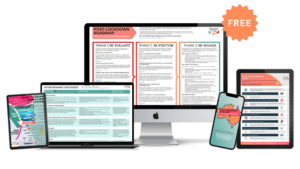Blogging as a part of your business marketing strategy is a little different from traditional journal or travel blogging. Finding the time and the inspiration can be tricky, so here are some tips from my experience and through talking to others. But first off –
Why blog at all?
- Blogging is an effective way of adding extra, informally presented content to your website while keeping your main pages to the point.
- It enables you to add a human element to your business; potential and past customers will get to know you better and, if they like the ‘story’ of you and your product, will be more engaged. And engagement, over time, will translate to referrals or sales.
- Blogging helps your Search Engine Optimisation or SEO. Google scans all websites for fresh, original content and – as long as it is relevant and error-free – Google gradually ranks these websites higher. This way, your website is more likely to be found when people search by query (keyword).
Blogging tips
- Set aside a particular time each week or fortnight to write a blog – a friend of mine does this every Wednesday afternoon. Such discipline!
- Find your ‘tone of voice’ as early as possible. This, you’d hope, will reflect the decisions you have made around your brand because your blog is a marketing tool. Which words describe your brand? Keep those in mind as you write.
- Be a little informal. Although your brand will be professional and perhaps convey efficiency or safety, there’s leeway in your blog to relax a bit.
- The saying is ‘content is king’, so produce informative, well-written content that is of interest to your reader. Stay pretty focused on one main idea – 500 words is a good length (similar to this blog).
- Write blogs that are tangential to your business: shout-outs to other businesses, something about your local area such as a festival, or things you notice as you work, such as warmer-than-usual sea temperatures.
- Include a few keywords in each blog to help the SEO process happen, and one in the title/URL.
- Check what you have written carefully. Show it to someone else if you find editing difficult, or read it aloud.
- Ensure people read your blog. For this, it has to be found, so post it to social media. For example, if you have a Facebook page, post an introductory sentence and link the reader back to the blog on your website. This will drive traffic (readers) to your website and gradually help its SEO. Get maximum value for your work by linking to your blog again if you are sending out an e-newsletter. Use quotes from it, too, for additional social media postings.
Finally, did you know?
Blog is a shortened form of ‘web log’, coined in 1999 by American designer, Peter Merholz, who jokingly reanalysed ‘web log’ as ‘we blog’. (Macquarie Online Dictionary)
Good luck, and I’ll be thinking of you on Wednesday afternoons 🙂
About Mel Roome
Mel is a Tourism Tribe member and kindly offered to provide some information about blogging for our members. Below is a little information about Mel. She is the principal editor of Hit Send, an editing and proofreading service for businesses. She is located in Hobart, Tasmania. Web copy, blogs, brochures, grant applications and award submissions are among the documents checked. The unique Hit Send business model means that jobs can be submitted and paid for online, no job is too short, and prices start at $25. Short jobs can be turned around in 4 hours, and there is even an editing plan for bloggers.




